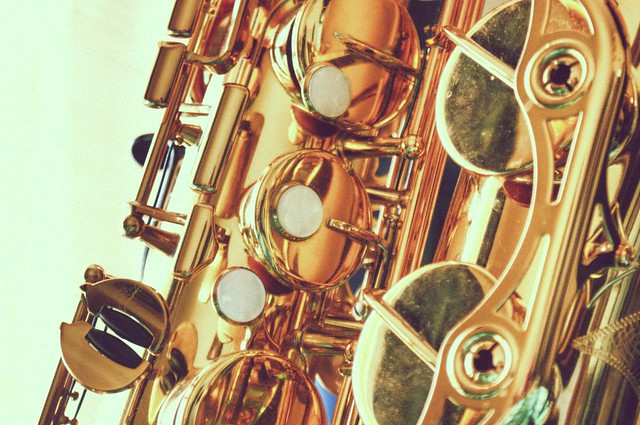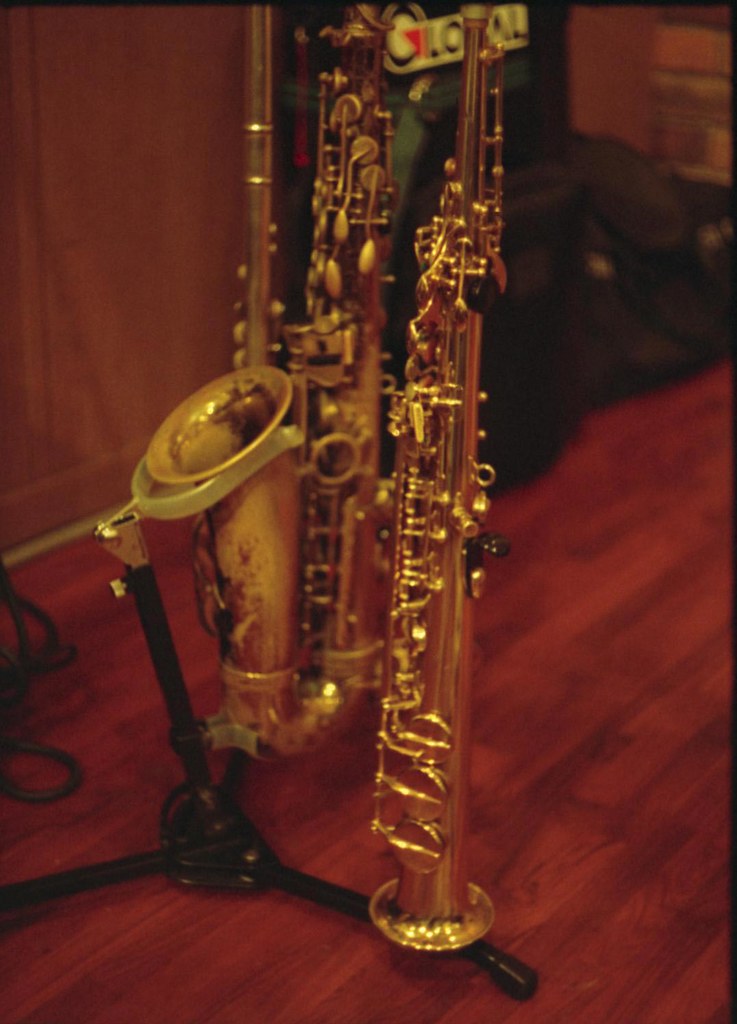By the 1940's the saxophone was a well established and very popular instrument in both classical and jazz music. As the 40's brought more musical styles like jump blues, rhythm and blues and rock and roll the instrument would become even more important and play a major roll in the new sound.
was a well established and very popular instrument in both classical and jazz music. As the 40's brought more musical styles like jump blues, rhythm and blues and rock and roll the instrument would become even more important and play a major roll in the new sound.
 |
One kid he inspired was Big Jay McNeely who took the honkin' over the edge and made a show of it... laying on his back, strolling into the crowds and walking on top of bars. (That's where the term "honkers and bar walkers" came from. That's a good cd compilation series featuring other rock and roll saxophonists)
Ahh... those crazy kids. This was a new generation, born in the 20's right around the time Louis Armstrong and Coleman Hawkins were coming on the scene. They probably thought these guys were nuts, but they fuelled the bands and drove the audience crazy with their energy.
Honkin' and screamin' aside, the saxophone, especially the tenor was sounding big and raunchy like never before. Guys were growling more and making it squawk and really wailin'. The honkin' was a fad that passed quickly but it helped to take the sax to another level of popularity, The rock and roll saxophone sound was now mandatory in all the jump, R&B, and rock and roll bands.
This new sound of the 40's rhythm and blues produced many rock and roll saxophone stars. Besides the ones I mentioned above, here are a few others; Joe Houston, Red Prysock, Sam "the man" Taylor, Lee Allen, Willis "gatortail" Jackson, Louis Jordan and King Curtis.
stars. Besides the ones I mentioned above, here are a few others; Joe Houston, Red Prysock, Sam "the man" Taylor, Lee Allen, Willis "gatortail" Jackson, Louis Jordan and King Curtis.
"Tenor battles" were popular as soon as you had a couple greats at any given time, like Coleman Hawkins with Lester Young, or Red Prysock with Sil Austin, and two of my favorites Sam Taylor with King Curtis.
Most of these guys were coming from the swing scene as well but were involved with their own R&B / rock and roll groups or were sidemen to star singers like Little Richard, Fats Domino, Wynonie Harris, and Ray Charles.
Without a doubt, one of the most influential for us guys playing any kind of rock and roll saxophone today is King Curtis, who came onto the New York scene shortly after the rock and roll movement got into full swing in the mid 50's. Of course you've heard his sax on many hit records from Aretha Franklin to The Coasters and he had many of his own as well in the 60's.
Unfortunately he was killed tragically at a young age. For me, his was the quintessential rock and roll saxophone
Rock on JF
Listen to some real Rock and Roll Sax music and for more information on sax related music, articles, audio samples visit http://JohnnyFerreira.com Article Source: EzineArticles |








